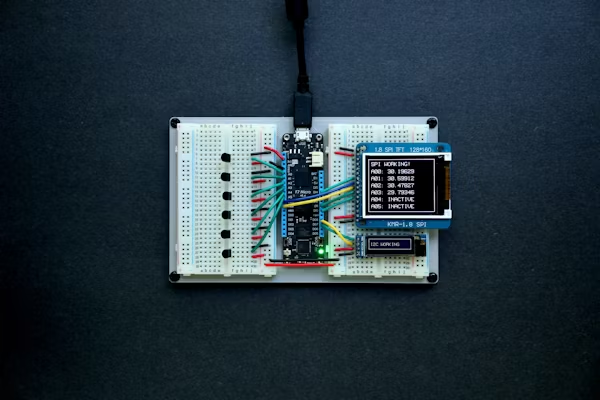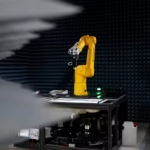In today’s world, technology is shrinking. Devices are becoming smaller, smarter, and more energy efficient, allowing us to create intelligent systems that can interact with their environment and communicate wirelessly. Among these advancements, the Antennino stands out as a versatile and affordable solution combining the power of Arduino with wireless communication and sensor integration. If you’re curious about how tiny circuits can make a big impact, this article will introduce you to Antennino — what it is, how it works, and why it’s gaining attention in the tech community.
What is Antennino?
Antennino is a compact electronic board that resembles the popular Arduino microcontroller platforms but is designed with additional wireless communication capabilities and built-in sensors. The name itself is a clever fusion of “Antenna” and “Arduino,” reflecting its core features: a microcontroller platform that can both sense the environment and wirelessly connect with other devices.
Unlike a basic Arduino board, Antennino comes equipped with a communication bus and a wireless link, enabling it to collect data from sensors and send it over to other devices or gateways without needing cables. This makes it ideal for projects where wireless data transmission and remote monitoring are essential.
The Heart of Antennino: Atmel Microcontroller
At the core of the Antennino is an Atmel microcontroller chip — the same family of chips widely used in Arduino boards. This ensures compatibility with the popular Arduino Integrated Development Environment (IDE), meaning programmers and makers familiar with Arduino can easily develop and upload code to Antennino without a steep learning curve.
The Atmel chip offers a great balance between performance and low power consumption, making Antennino suitable for long-term deployments in projects where power efficiency is critical.
Built-In Sensors and Communication Bus
One of Antennino’s standout features is its ability to interface with external sensors via an integrated communication bus. This allows the board to gather real-time data from a variety of sources such as temperature, humidity, light intensity, or motion sensors.
By having the communication bus onboard, the Antennino can easily connect multiple sensors at once, creating a robust sensor network that can be managed by a single board. This multi-sensor capability is especially valuable for IoT (Internet of Things) applications, where gathering diverse environmental data is key.
Wireless Connectivity: Freedom from Wires
A major advantage of Antennino is its built-in wireless communication module. This enables the board to transmit the data it collects without physical cables, allowing for flexible placement in hard-to-reach or remote locations.
Whether you need to monitor conditions in a greenhouse, track environmental parameters in a smart city setup, or collect data from a distant machine, Antennino’s wireless link ensures seamless data exchange with a central gateway or other remote modules.
Multi-Role Functionality
What truly sets Antennino apart is its multi-role flexibility. Depending on the sensors and modules connected, the board can act either as a remote sensor node or as a data collector (gateway). This means the same hardware can be deployed in different roles within a network, reducing the need for multiple specialized devices.
For example, one Antennino board could gather temperature and humidity data in a remote location, while another could act as a gateway that collects data from several remote Antennino nodes and relays it to a central server or cloud service.
Low Cost and Energy Efficient
In the world of wireless sensor networks, cost and power consumption are always critical considerations. Antennino is designed to be budget-friendly, making it accessible for hobbyists, educators, and small businesses looking to prototype or deploy sensor-based projects.
Thanks to its low-power Atmel microcontroller and efficient wireless module, Antennin’o can operate for long periods on battery power, making it ideal for applications where frequent maintenance or power supply is a challenge.
Applications of Antennino
The versatile nature of Antennino opens the door to a wide range of applications across different fields:
Environmental Monitoring: Collecting data like temperature, humidity, or air quality in agriculture or urban environments.
Smart Homes: Integrating sensors to control lighting, temperature, or security systems wirelessly.
Industrial Automation: Monitoring machines or processes remotely to ensure efficient operation and early fault detection.
Educational Projects: Teaching students about microcontrollers, wireless communication, and sensor integration in a hands-on way.
IoT Prototyping: Quickly developing and testing IoT systems without investing in expensive equipment.
Programming Antennino with Arduino IDE
Because Antennino uses an Atmel chip compatible with Arduino, programming it is straightforward for anyone familiar with the Arduino ecosystem. Users can write sketches (programs) using the Arduino IDE, upload them to the board via USB, and utilize existing Arduino libraries to interface with sensors and communication modules.
This compatibility lowers the barrier for makers and developers, enabling them to build complex sensor networks without starting from scratch.
How Antennino Fits in the Growing IoT Landscape
The Internet of Things is transforming how devices interact and how data drives decision-making in businesses, cities, and homes. Antennino’s combination of sensor integration and wireless communication makes it a valuable building block in this ecosystem.
By enabling easy data acquisition and transmission, Antennino helps users create smart systems that can monitor, react, and adapt to changing conditions, driving efficiency, safety, and convenience.
Getting Started with Antennino
For newcomers interested in exploring Antennino, starting is simple:
Choose Your Sensors: Select sensors based on the data you want to collect.
Connect Sensors to the Board: Use the integrated communication bus to hook up sensors.
Program the Board: Write or upload Arduino sketches tailored to your project.
Set Up Wireless Communication: Configure the wireless link to send data to a remote module or gateway.
Collect and Analyze Data: Use a gateway or computer to receive sensor data and process it for insights.
The modular nature of Antennino allows for experimentation and growth, making it a perfect platform for both beginners and seasoned developers.
Advantages Over Traditional Arduino Boards
While Arduino boards are incredibly popular for DIY projects, Antennino adds features that expand what you can do with similar hardware:
Integrated Wireless Communication: No need for external modules or shields.
Multi-sensor Communication Bus: Supports multiple sensors natively.
Role Flexibility: Can act as sensor node or data gateway.
Optimized Power Use: Designed for low power consumption in field applications.
These improvements mean less wiring, simpler setups, and more scalable sensor networks.
Challenges and Considerations
Like any technology, Antennino has some limitations to consider:
Range Limitations: Wireless communication range depends on the module used and environmental factors.
Sensor Compatibility: While flexible, certain sensors may require additional interfacing.
Power Management: For very long deployments, battery management is crucial.
Learning Curve: Though Arduino-based, mastering wireless communication protocols may take time.
Understanding these factors will help users design better projects and avoid common pitfalls.
The Future of Antennino and Wireless Sensor Boards
As the demand for connected devices grows, platforms like Antennino are likely to evolve, offering:
Improved wireless protocols for longer range and higher data rates.
Enhanced energy harvesting features to extend battery life.
More seamless integration with cloud platforms and AI.
Wider sensor compatibility and modular hardware expansions.
Antennino represents a step toward more accessible and versatile IoT development, fostering innovation at every level.
Conclusion
The Antennino board is an exciting innovation blending Arduino simplicity with wireless sensor technology. Its low cost, energy efficiency, and multi-role capabilities make it a practical choice for hobbyists, educators, and professionals alike. Whether you’re building a smart garden, automating your home, or creating industrial sensor networks, Antennino offers a flexible platform to bring your ideas to life.
With the ease of programming through the Arduino IDE and the power of integrated communication, Antennino invites everyone to explore the wireless world of sensor data, helping to shape smarter environments and connected communities.
FAQs About Antennino
What microcontroller does Antennino use?
It uses an Atmel microcontroller compatible with Arduino boards.
Is Antennino compatible with the Arduino IDE?
Yes, you can program Antennino using the traditional Arduino IDE.
Can Antennino communicate wirelessly?
Yes, it has built-in wireless communication capabilities for data transmission.
What types of sensors can I connect to Antennino?
Various sensors like temperature, humidity, light, and motion can be connected.
Can Antennino act as both sensor node and gateway?
Yes, it is designed to be multi-role depending on how it’s configured.
Is Antennino suitable for beginners?
Absolutely, especially for those familiar with Arduino platforms.







